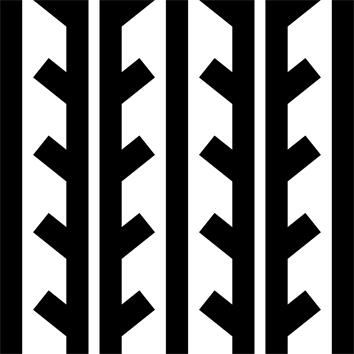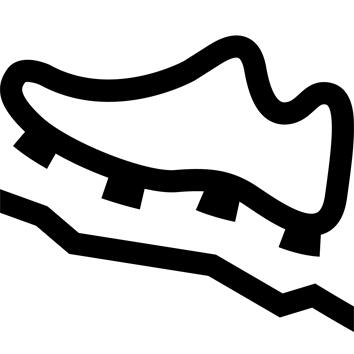Am I sure my boots are warm enough for winter hiking?
We carry out comparative studies in a thermal laboratory, under walking conditions in light winds (5km/h). This enables us to measure the thermal resistance of our boots. However, each individual has his or her own sensitivity to cold.
Comfort temperature: slightly cold sensation, and 70% of users find the thermal sensation on their feet acceptable.
Limit temperature: very cold sensation, and 10% of users find the thermal sensation on their feet acceptable.
How do my boots protect me from the elements?
Your boots have been designed with a membrane to ensure waterproofing and breathability. A membrane is a very thin component (from 5 to 25 micrometers) affixed to the inside of a fabric that keeps water out while allowing moisture to escape.
How can I be sure that my boots are 100% waterproof?
We've ensured that your boots are waterproof with laboratory tests simulating walking with feet half-submerged in water, and with wear and ageing tests in the field.
Will my boots stand up to regular use over time?
Our engineers conduct laboratory tests to guarantee your complete satisfaction in use. We validate the following elements, among others: eyelet and strap resistance, bonding, toxicology, UV resistance, abrasion of sole and upper components, accelerated aging.
How do I get the right footwear for hiking on snow?
To get the best outfitting for winter, we recommend the following principles:
Warmth: warm socks (ideally with a suitable % wool)
Breathability: choose socks according to the intensity of the hike, and in particular choose breathable models to limit humidity.
Stem height: adapt the height of the sock to the height of the stem, and prefer high models if you're looking for more protection.
How can I preserve the technical qualities of my boots?
A fabric's water repellency is its ability to let water slide off its surface without absorbing it. This means the fabric doesn't become waterlogged, and remains light, breathable and warm. Water repellency is achieved by a treatment applied to the outer face of the fabric. This treatment needs to be renewed over the life of the boot. Products (spray or liquid) are available for this purpose in our stores.
How do I dry the inside of my boot?
In use, the boot may become damp (condensation and perspiration).
If the boot is very damp, we recommend removing the insole, filling the shaft with newspaper balls and changing them regularly. The paper will pump out the moisture and speed up drying.
Never place boots too close to a source of heat, but leave them in a warm, dry, well-ventilated place.
Weight
24 : 0.372 kg
25 : 0.396 kg
26 : 0.424 kg
27 : 0.46 kg
28 : 0.48 kg
29 : 0.516 kg
30 : 0.54 kg
31 : 0.564 kg
32 : 0.588 kg
33 : 0.61 kg
34 : 0.688 kg
35 : 0.704 kg
36 : 0.752 kg
37 : 0.77 kg
38 : 0.792 kg




